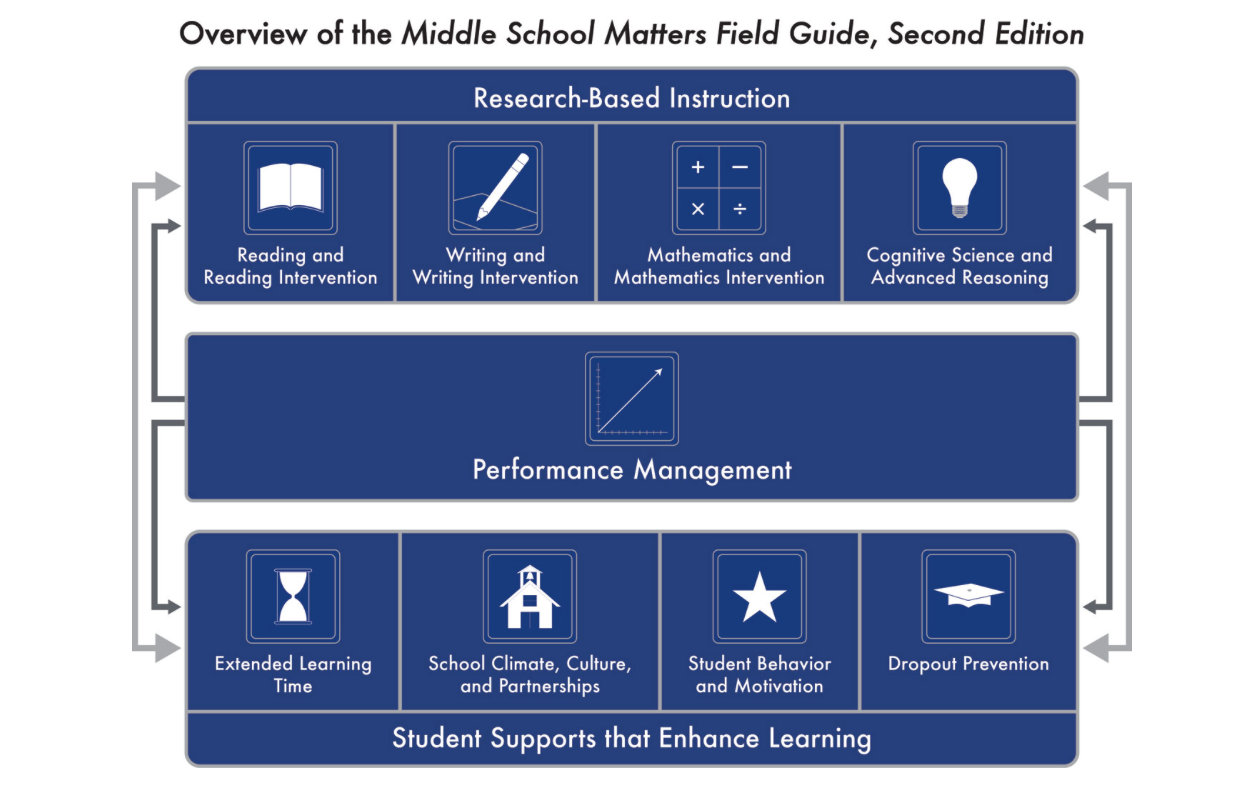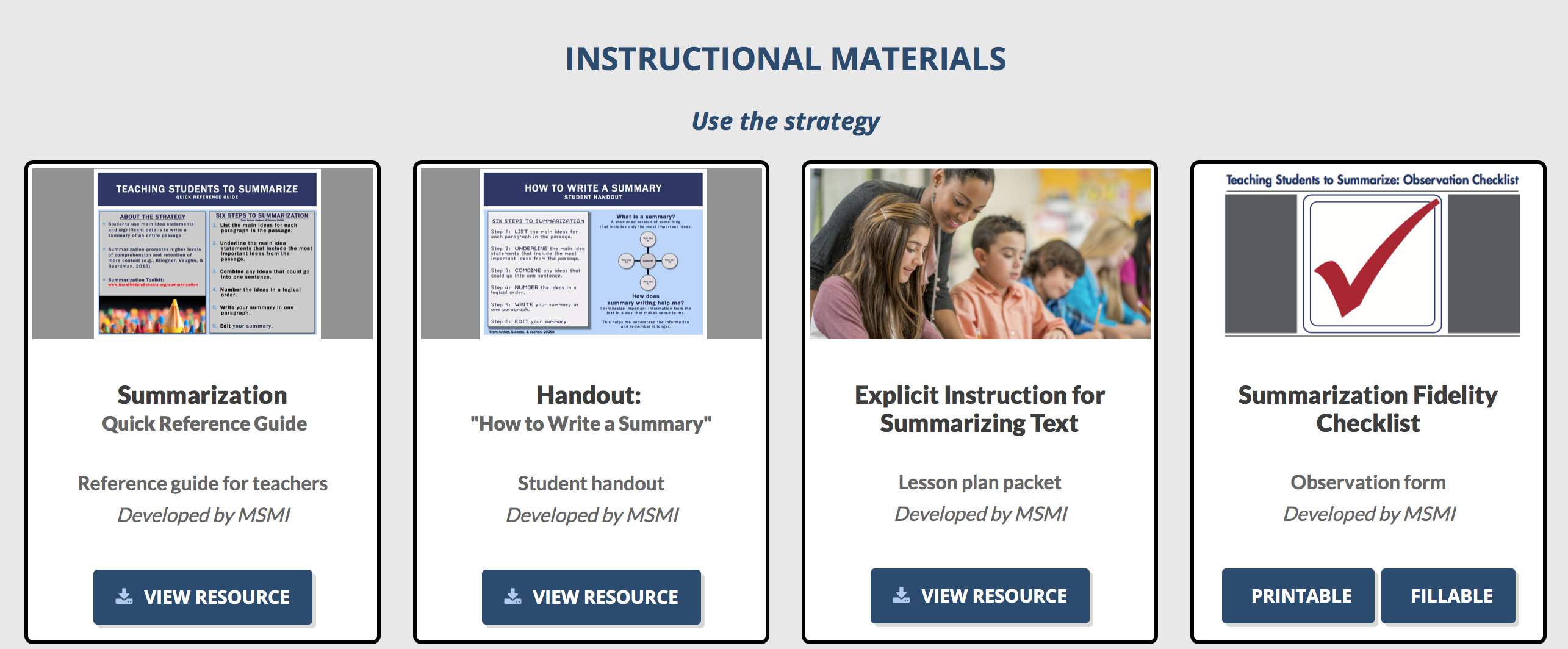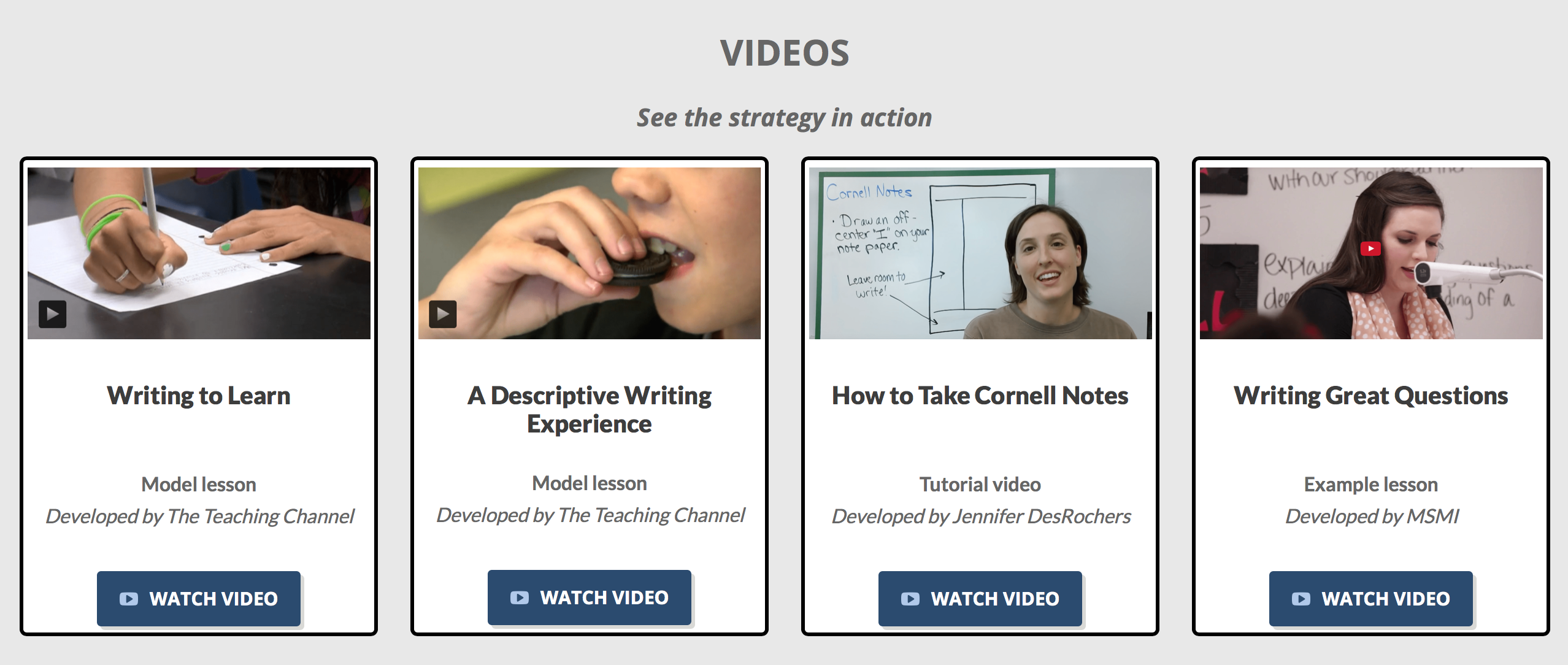When students enter the middle grades they experience physical and emotional changes along with the increased academic demands of learning new and more difficult content. For many students, the middle grades mark a critical juncture, a time when they develop complex literacy and critical thinking skills needed to be successful in high school and beyond or a time when they slip into risk of academic failure and eventual high school dropout.
Students are expected to possess the requisite reading skills to be successful in the middle grades so that classroom instruction can largely focus on enhancing their content knowledge. For example, students are expected to be able to read and learn from grade-level texts. Yet, the reality is that only 36% of eighth-graders are proficient or advanced at reading, according to the 2017 National Association of Education Progress (NAEP) reading assessment, and that percentage is significantly lower for subgroups of students, including students with disabilities (10%) and English learners (5%). In addition, research indicates that the majority of students with below grade level reading skills in the middle grades have difficulties in foundational reading skills (e.g., word reading) as well as reading comprehension.
The problem? Although middle school teachers possess deep expertise in their content area, few have had formal or meaningful training in providing reading instruction within the context of their content areas. As a result, most have insufficient knowledge of the science of teaching reading, which inhibits their ability to support students who are not yet proficient readers and thus, struggle with reading and learning from content area texts. Fortunately, researchers have identified a set of cross-curricular strategies for supporting the literacy needs of adolescents, including those with learning disabilities, and research indicates that PD can be designed and delivered to meet the needs of teachers and increase their confidence in instructing students of diverse reading abilities.
Research-Based Practices in the Middle Grades
Middle school teachers deserve clear guidance and useful resources for learning how to integrate research-based literacy practices into content area instruction as well as effective, ongoing, job-embedded professional development. The Middle School Matters Institute (MSMI), an initiative of the George W. Bush Institute in partnership with The Meadows Center for Preventing Educational Risk, was created to address this need. MSMI partners with the nation’s leading education researchers and practitioners and draws upon decades of high-quality research to provide excellent support and resources to middle grades schools across the nation.
Researchers at MSMI found that a strong research base for effective instructional practices in the middle grades already exists and identified a set of instructional, support, and data-management strategies that accelerate student learning, raise attendance rates, and increase positive behaviors in the classroom. This research is compiled and translated for practitioners in the second edition of the Middle School Matters Field Guide. Specific instructional principles and practices that apply to all content areas for sixth-, seventh-, and eighth-graders (including students who have learning disabilities and are learning English) are identified, described, and illustrated through examples to help educators understand and then implement these practices in their classrooms and schools.
A large portion of the field guide is devoted to integrating literacy practices across content areas (see the Reading and Reading Interventions and Writing and Writing Interventions chapters). For instance, the field guide describes specific strategies teachers can use to help students monitor their comprehension as they read, identify main ideas, develop summaries, and learn important vocabulary words related to a specific unit or chapter. These same practices are embedded in the TCLD reading instruction and intervention lesson plans, which educators can download and adapt for their purposes. Schools should implement these practices widely and with fidelity to reduce students’ risk of high school dropout and prepare them for successful high school and postsecondary experiences.

Instructional Toolkits for Research-Based Practices
In addition to knowing which literacy practices are effective for supporting adolescent content area reading, educators also need specific resources (e.g., lesson plans, student materials) for implementing these practices. MSMI’s toolkits provide educators with the best available professional development resources, videos, and instructional materials—all housed in one location and available free of charge. Each toolkit focuses on one research-based practice or strategy, and all toolkits align with the MSM Field Guide.
Reading Toolkits
- Collaborative Strategic Reading
- Generating Leveled Questions
- Get the Gist (Main Idea)
- Summarization
- Frayer Model
- Vocabulary Maps
- Identifying Students for Interventions
- Selecting and Implementing Reading Interventions

Writing Toolkits
- Writing to Learn
- Summary Skills
- Sentence Combining
- Writing Strategies and Self-Regulated Strategy Development
- Revising and Editing Strategies
- Peer and Self-Assessment

Additional toolkits are available for advanced reasoning, mathematics, dropout prevention, and performance management (i.e., data use).
Take Action
We challenge educators to explore these toolkits and identify at least one research-based literacy practice that could be integrated into instruction during the upcoming school year. TCLD researchers and MSMI staff are happy to answer questions and provide additional materials and guidance as educators begin to implement these practices!
